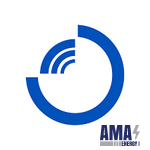Foundry Metallurgical Overhead crane

Foundry cranes are designed to service converter and electric steelmaking shops of metallurgical enterprises and are designed for heavy and very heavy operating conditions, which include high static, dynamic and impact loads associated with production technology.
Metallurgical foundry cranes are divided into transport, pouring and casting cranes.
- Transport crane
is designed to transfer a ladle with molten metal from a steel ladle to a rotating stand of a continuous casting machine (CCM) or a ladle furnace.
- Filling tap
services the furnace department of the shop and fills ladles with liquid iron into converters or electric steel-smelting furnaces.
- Filling tap
used for pouring converter steel into molds or forms.
Foundry metallurgical cranes usually have several lifting mechanisms: the main one, designed to move the ladle with molten metal; the first auxiliary (and, if necessary, the second and third) lifting mechanism, which tilts the ladle during pouring, as well as other lifting mechanisms designed to perform maintenance work on the equipment in the span.
The main hoist is usually placed on a separate main trolley. On a separate auxiliary trolley are located the auxiliary hoist mechanisms, usually several mechanisms. Other hoist mechanisms required by the customer can be located on the same and/or additional trolleys and/or represent mobile electric hoists installed on separate monorails on the crane bridge.
Both the main and first auxiliary lifting mechanisms can be placed on one trolley. In this case, the first auxiliary lifting mechanism is installed on a separate frame with the possibility of controlled movement along the trolley frame to bring the hook to the bucket and track the movement of the hook during pouring or tilting the bucket.
Depending on the number of trolleys and the operating conditions, foundry bridge cranes can have two, three or four span beams, which are connected into a single bridge frame using end beams. The resulting frame rests on the crane travel mechanism, which is usually a multi-wheel (8-24 wheels) and multi-drive (4-8 drives) balancing system.
Based on the general crane layout, Technoros PO divides the crane line of foundry cranes into the following groups :
1) double-girder foundry cranes with one trolley on which the main lifting mechanism is located
These cranes are designed only for transporting cargo and carrying ladles with liquid metal without tilting them. The lifting device can be a hook suspension or a double-hook traverse. The lifting capacity of these cranes is in demand up to 150 tons. The required lifting capacity and other parameters of foundry cranes of such a configuration are specified when filling out the questionnaire.
2) double-girder foundry cranes with one trolley on which the main lifting mechanism and one auxiliary lifting mechanism are located ,
which is installed on a separate frame and has the ability to control movement along the trolley frame. Foundry cranes of this group are designed to transport loads, carry ladles with liquid metal and tilt them. The lifting element of the main lift can be a hook suspension or a double-hook traverse for the ladle. The auxiliary lift has a hook suspension. The lifting capacity of the main lift of these cranes is in demand up to 300 tons. If there is a technological need to turn the ladle, a rotating trolley is used. The required lifting capacity and other parameters of foundry cranes of this configuration are specified when filling out the questionnaire.
3) three-girder foundry cranes
are used when it is necessary to rotate the bucket and there is a requirement for the presence of auxiliary lifting mechanisms with a large lifting capacity (significantly greater than that of serial electric hoists) or when it is necessary to specialize these auxiliary lifting mechanisms (grab and/or magnetic). In this case, the main trolley is similar to the second layout group of foundry cranes. The trolleys of such a foundry crane move in parallel on one level. The lifting capacity of the main lift of these foundry cranes is required to be up to 300 tons. The required lifting capacity and other parameters of foundry cranes of such a layout are specified when filling out the questionnaire.
4) four-girder casting cranes
are the most popular and are always used with two trolleys: main and auxiliary, which move in parallel along their bridge span beams at different height levels (the auxiliary trolley has the ability to pass under the main trolley). The lifting capacity of the main lift of these foundry cranes is in demand up to 600 tons. The required lifting capacity and other parameters of foundry cranes of such a configuration are indicated when filling out the questionnaire.
When assembling crane units, we take into account the technological specifics of the customer's production, as well as individual requirements reflected in the technical specifications for the crane. When producing a bridge metallurgical foundry crane, we use components from leading manufacturers and trusted suppliers.

